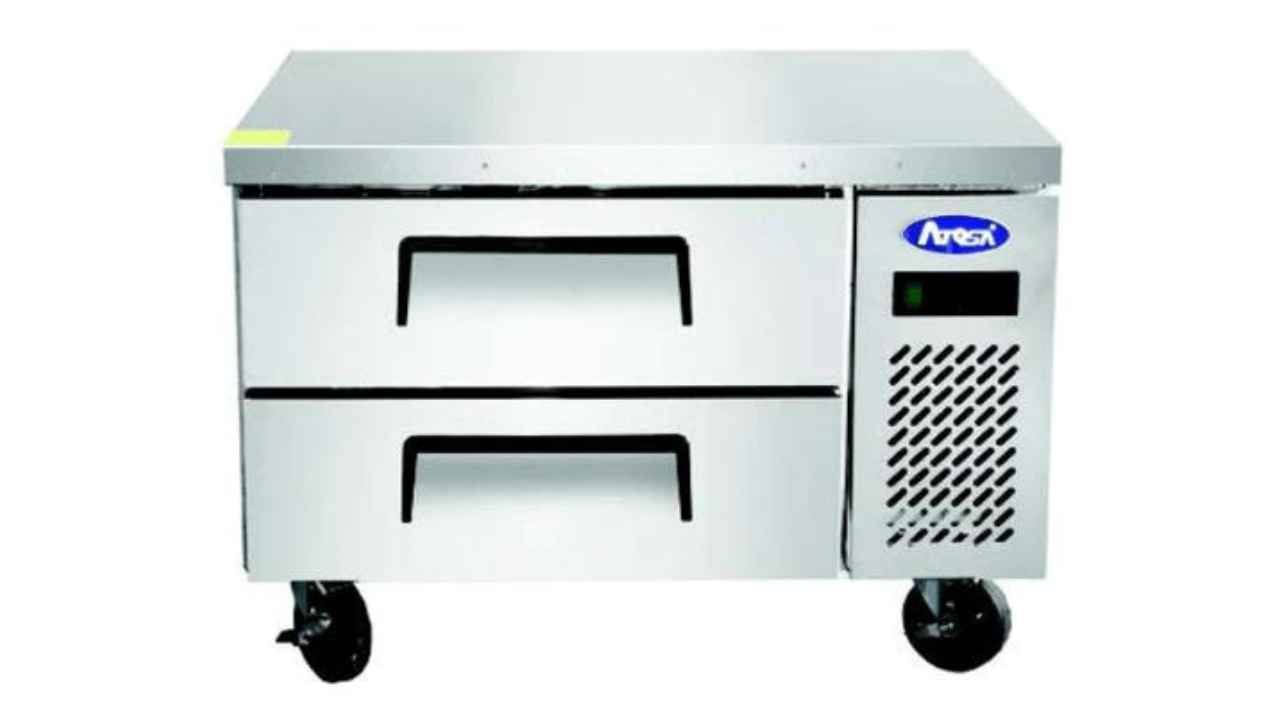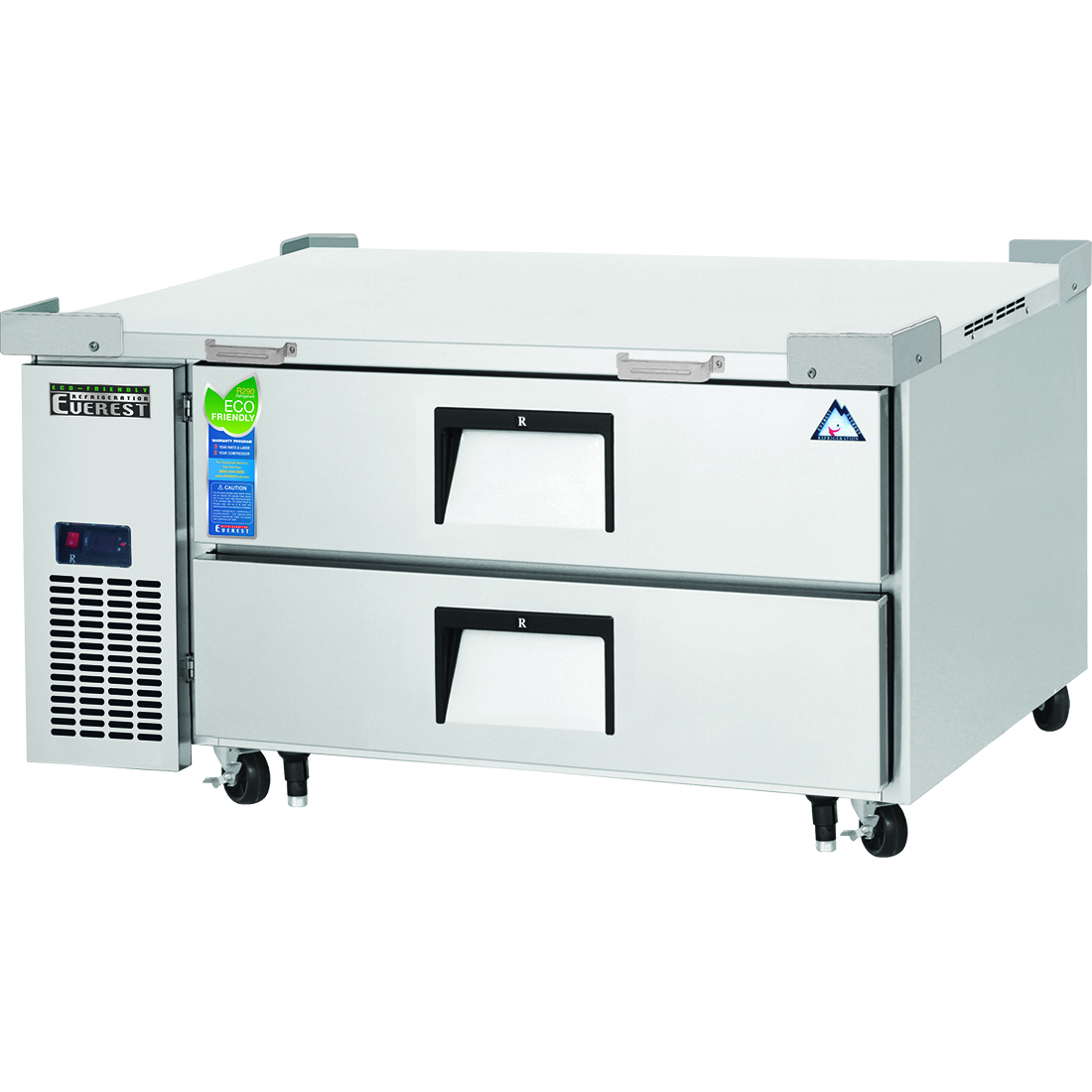Dec 18th 2023 - Team Member
Maintaining Your Chef Base: Best Practices for Longevity and Performance
In the heart of a bustling commercial kitchen, the chef base plays a vital role in ensuring the smooth flow of operations. This multifunctional piece of equipment not only provides a sturdy base for countertop cooking equipment but also offers convenient refrigerated storage for ingredients. To keep your chef base in top-notch condition and ensure its longevity and optimal performance, it's crucial to follow best practices in maintenance and care.
Understanding Your Chef Base
Before diving into maintenance, let's briefly understand what a chef base is and its significance in a commercial kitchen.
What Is a Chef Base?

A chef base, also known as a refrigerated equipment stand, is a specialized piece of equipment designed to support countertop cooking appliances like griddles, hot plates, and charbroilers. It typically features refrigerated drawers or cabinets beneath the cooking surface, providing chefs with easy access to ingredients while cooking.
Atosa MGF8448GR
Significance in a Commercial Kitchen
Chef bases are the workhorses of commercial kitchens. They not only save space by combining equipment support and refrigerated storage but also enhance kitchen efficiency. Chefs can quickly retrieve ingredients, reducing the time spent moving back and forth between workstations and refrigerators. However, to reap these benefits, proper maintenance is essential.
Maintenance Best Practices
Maintaining your chef base involves a combination of regular cleaning, temperature monitoring, and preventive measures. Here are the best practices to follow:
1. Regular Cleaning
Proper cleaning is the foundation of chef base maintenance. Follow these steps:
a. Exterior Cleaning

- Daily Wipe Down: Use a damp cloth to wipe down the exterior surfaces of the chef base daily to remove spills and splatters.
- Stainless Steel Care: If your chef base has a stainless steel exterior, use a stainless steel cleaner to maintain its shine and prevent corrosion. Always wipe in the direction of the grain.
b. Interior Cleaning
- Weekly Cleaning: Remove all items from the refrigerated drawers or cabinets and clean the interior with a mild, non-abrasive cleaner. Pay special attention to spills and residue.
- Door Gaskets: Clean door gaskets regularly to ensure a proper seal, preventing temperature fluctuations.
- Drain Cleaning: If your chef base has a condensate drain, ensure it's clear of debris to prevent blockages.
2. Temperature Monitoring
Maintaining the correct internal temperature is crucial for food safety and equipment efficiency. Here's what to do:
- Temperature Checks: Use a thermometer to regularly check the temperature inside the refrigerated drawers or cabinets. Ensure they stay within the safe temperature range (usually 34°F to 40°F or 1°C to 4°C).
- Calibration: If your chef base has an adjustable thermostat, calibrate it as needed to maintain accurate temperature settings.
3. Preventive Measures
Taking proactive steps can prevent issues before they arise:
- Scheduled Maintenance: Establish a maintenance schedule that includes regular inspections by a qualified technician. They can identify and address potential problems early.
- Airflow: Ensure that the vents and fans in your chef base are free from obstructions to maintain proper airflow.
- Leveling: Periodically check and adjust the leveling of the chef base to ensure stability and proper operation.
4. Organize and Rotate Contents
Efficient organization inside the refrigerated drawers or cabinets is essential:
- Organization: Store ingredients in an organized manner, with labels and dates for easy identification.
- Rotation: Follow the FIFO (First In, First Out) method to use older ingredients first, minimizing waste and maintaining food quality.
Troubleshooting Common Issues
Despite regular maintenance, chef bases may encounter occasional issues. Here are some common problems and troubleshooting tips:
1. Temperature Fluctuations
If you notice temperature fluctuations, follow these steps:
- Check Door Seals: Ensure that the door gaskets are clean and sealing properly.
- Inspect Vents: Check for obstructions in the vents or fans that could impede airflow.
- Thermostat Calibration: If necessary, recalibrate the thermostat to maintain consistent temperatures.
2. Excessive Condensation
Excessive condensation can affect food quality. To address this issue:
- Check Drain: Ensure that the condensate drain is clear of debris and draining properly.
- Door Gaskets: Inspect and clean door gaskets to maintain a proper seal.
3. Unusual Noises
Unusual noises can be a sign of mechanical problems:
- Fan Issues: Noisy fans may indicate problems with the evaporator fan motor. Consult a technician for inspection and repair.
- Compressor Noise: Unusual compressor noises should also be addressed promptly by a technician.
Conclusion
A well-maintained chef base is the backbone of a smoothly functioning commercial kitchen. By following the best practices outlined in this guide, you can ensure its longevity and optimal performance. Regular cleaning, temperature monitoring, and preventive measures are key to preventing issues and keeping your chef base in top-notch condition. Remember that scheduling professional maintenance and addressing problems promptly will further extend the life of your chef base, making it a reliable and efficient asset in your commercial kitchen for years to come.

